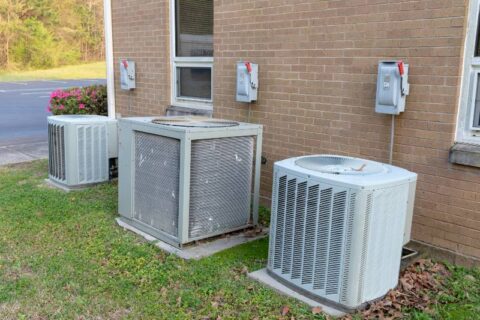Are Mini-Splits Energy Efficient?
When it comes to energy efficiency, mini-splits are hard to beat. Mini-split systems are highly efficient, thanks to their small size and ability to target specific areas in your home. This makes them a great choice for heating and cooling Utah homes. Read on to learn more about the energy-efficiency of mini-split systems and learn if your household would benefit from one.
Mini-Splits Don’t Use Ductwork
If you’re considering a mini-split for your home, one of the best things about this type of system is that it doesn’t require ductwork. This can save you a lot of money and hassle during installation, as well as making it easier to maintain your system over time.
Ductless mini-splits work by delivering conditioned air directly into the rooms or areas that need it, using a series of small, flexible tubing. This means that there’s no need to route ductwork through attics or crawlspaces–making the installation process much simpler.
Additionally, because mini-splits don’t rely on ductwork, they can be a great option for homes that don’t have existing ductwork or that have difficulty accessing ductwork for repairs.
Mini-splits are also much more energy efficient than systems that use ductwork. Ductwork can often leak, which can cause your system to work harder and use more energy. With a mini-split, there are no leaks and no energy wasted–meaning you’ll save money on your energy bills each month.
Mini-Splits Have High SEER Ratings
Mini-Split systems boast some of the highest SEER ratings on the market. But what exactly is SEER? SEER stands for “Seasonal Energy Efficiency Ratio” and is a measure of how much cooling a unit can provide per unit of energy consumed. The higher the SEER rating, the more energy efficient the unit is.
Most mini-splits have SEER ratings that range from 15 to 30. This means that they are up to twice as energy efficient as traditional air conditioners. And since they use less energy, they also produce fewer greenhouse gases.
Mini-Splits Can Be Zoned to Specific Areas
Mini-splits systems can be zoned to specific areas, meaning you only heat or cool the rooms you’re using. That can add up to big savings on your energy bill.
Mini-Splits Are More Efficient in Extreme Temperatures
As energy costs continue to rise, more and more homeowners are looking for ways to reduce their energy consumption. Mini-splits are one of the most energy-efficient options for heating and cooling your home, and they’re especially effective in extreme temperatures.
Mini-splits work by transferring heat energy from the inside of your home to the outside (or vice versa), using a refrigerant gas. This means that they don’t rely on noisy, energy-intensive fans to circulate air, so they use less energy overall. Mini-splits have smaller compressors that run at lower speeds, which uses less energy than central air conditioners.
Mini-splits are much better at regulating the temperature in your home than traditional HVAC systems since they can cool or heat specific areas of your home as needed, rather than wasting energy by cooling or heating the entire space.
If you live in an area with extreme temperatures, a mini-split can be a great option for keeping your energy bills down. Contact Parley’s PPM Plumbing, Heating & Cooling at 801-226-3033 (Utah County) or 801-229-2665 (Draper area) to learn more about mini-splits and other energy-efficient options for your home.


